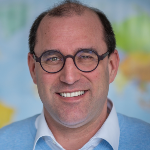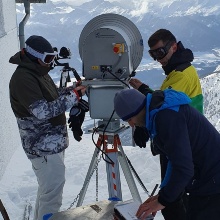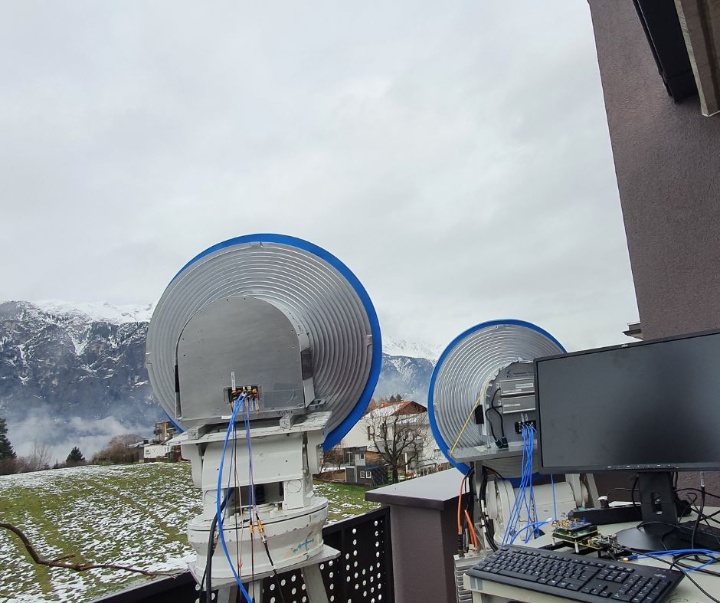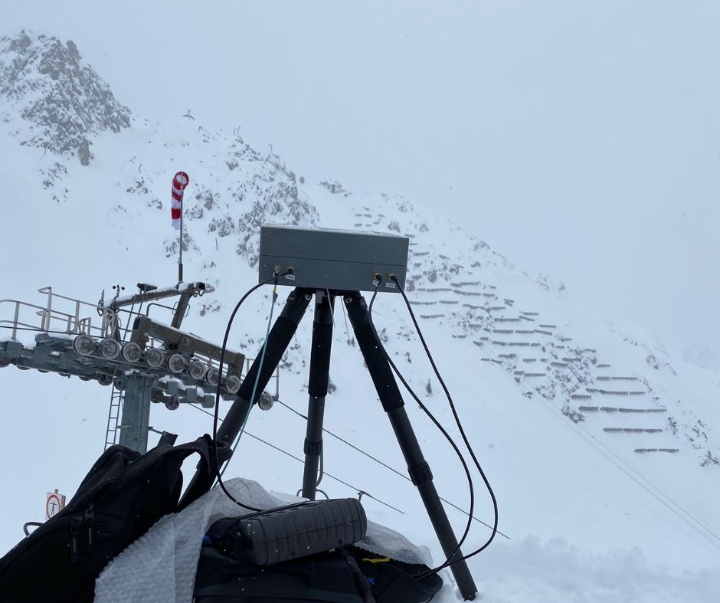Making emergency calls even in remote areas and transmitting large amounts of data in real time? This is possible with the sixth generation of mobile communications - 6G for short. Researchers and students at the University of Stuttgart have established the most powerful radio link ever installed between mountain and valley in the Alps. The range and data rate exceed known communication standards and could fundamentally change the way we communicate.
The EIVE-T project at the University of Stuttgart is set to launch the next generation of mobile communications. "In terms of the data transmission of the future 6G network, we need to achieve significantly higher data rates with ultra-low latency," explains Professor Ingmar Kallfass from the Institute for Robust Power Semiconductor Systems (ILH) at the University of Stuttgart. This means that around ten times more data can be transmitted and received almost in real time. "For this, we need enormous capacities and speeds at all locations around the world. The key components for a global wireless communication network of this kind are satellite communication and broadband data transmission."
Global 6G mobile network with fiber optics and satellites
Satellite communication increases network coverage far beyond conventional terrestrial infrastructures such as fiber optic networks. The combination of satellite and broadband communication technologies unites a dense network of 6G data nodes, which means that high-resolution streaming or Internet-of-Things services can be used on the move, remote-controlled drone flights can be conducted and emergency calls can be made in the mountains - anytime and anywhere.
"A 6G network promises to fundamentally change the way we communicate, do business and interact with the world around us by creating a reliable and ubiquitous high-speed communications infrastructure," says Kallfass. "This technology makes it possible to cover every corner of the globe with a reliable network. We are considering scenarios ranging from densely populated cities to the most remote regions."
Research team brings broadband internet to the Alps for the first time
Kallfass and his team have now demonstrated a broadband radio link in the Austrian Alps near Innsbruck: It stretches between the Götzens valley and the Hafelekar summit at an altitude of 2334 meters over a length of 2 x 10.5 kilometers and transmits data at a speed of 25 gigabits per second. "This corresponds to a tenfold increase in both the distance and the data rate compared to conventional radio relay," explains Kallfass.
The research team from the University of Stuttgart has thus succeeded in establishing such a connection in the mountains between the valley and the summit for the first time. What's more, this was done under extreme winter terrain and weather conditions. In addition, data transmission must sometimes penetrate dense cloud layers, which means that the elevation is as high as for communication between satellites and ground stations. Another challenge was to precisely align the reflector antenna on the mountain with the terminal in the valley without a direct line of sight.
Kallfass and his team developed a tracking device especially for this purpose. This allows the antenna on the summit terminal to be calibrated and thus precisely swiveled to the terminal in the valley even without a line of sight. Precisely calibrated, the antenna on the summit receives and reflects the signal from the transmitter to the receiver, similar to a mirror. With this technology, the transmitter and receiver do not have to be placed in close proximity to each other. This enabled the researchers to double the transmission distance. "The advantage of this is that robust and reliable data and Internet connections can be set up quickly wherever they are needed. For example, in remote regions or areas where environmental disasters have destroyed the network infrastructure," explains Kallfass.
About the EIVE-T project
The EIVE-T project (Exploratory In-Orbit Verification of an E-Band Satellite Communication Link – Terrestrial Mission) is based at the University of Stuttgart's ILH and funded by the German Aerospace Center (DLR) and the Federal Ministry for Economic Affairs and Climate Action (BMWK). Scientific support was provided by the Fraunhofer Institute for Applied Solid State Physics (IAF) and Radiometer Physics GmbH, which provided technologies for transmitters and receivers. Researchers and students demonstrated the longest-range and fastest radio link ever established between mountain and valley. The project aims to develop a crucial key component for a globally comprehensive, high-performance 6G mobile network.
Expert Contact:
Prof. Ingmar Kallfass, University of Stuttgart, Institute for Robust Power Semiconductor Systems, Phone: +49 711 685 68747, email
Find out more about the EIVE-T project on the projects' webpage.

Jacqueline Gehrke
Online Editor

Ingmar Kallfass
Prof. Dr.-Ing.Institute Director





